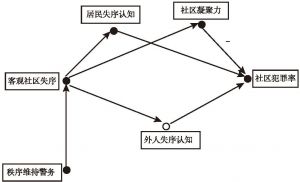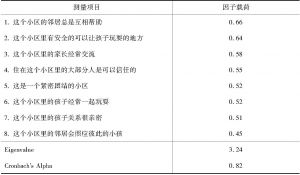论文
上海居民小区的空间秩序与安全:检验“破窗理论”
摘要
“破窗理论”认为,社区空间的轻微失序会引发越轨乃至犯罪行为,该论断已成为西方犯罪社会学的核心理论之一,无论在政策应用方面还是学理分析方面都具有重要的地位。然而,关于中国城市社区的空间秩序与社区安全之间的关系,仍然缺乏基于经验资料的研究。本文运用上海社区研究(Shanghai Community Study,SCS)对居民小区的抽样调查资料,探讨空间秩序与社区安全之间的关系。本研究使用居民小区过去一年内发生的越轨及犯罪行为总和,作为对居民小区安全状况的测量。对于社区空间失序状况,在经典量表的基础上,结合中国的实际情况进行修订,并使用项目反应理论(Item Response Theory,IRT)模型对新量表的效度进行了评估。对资料的多元回归分析结果显示,居民小区中物理失序程度越高,过去一年内发生犯罪及越轨行为的可能性也越大。但失序并非通过提高居民失序感或损害小区凝聚力来影响犯罪率。主要由于失序感和凝聚力对于犯罪率没有显著影响。此外,虽然社区安全管理举措有助于降低社区物理失序水平,但并不能由此降低犯罪率。这些研究发现表明,“破窗理论”对当前中国社会具有一定适用性,但其主要的机制并未得到验证。此外,需要将物理失序和社会失序分开考察。研究发现和有关结论也为促进社区安全的政策干预、社区规划提供了参考依据。
检索正文关键字
论文目录
- 一 问题的提出:再访破窗理论
-
二 破窗理论:回顾与争辩
- (一)轻微失序是严重犯罪的序曲?
- (二)社区失序如何影响犯罪?
- (三)秩序维持型警务能否降低犯罪?
-
三 样本、测量及分析策略
- (一)样本
- (二)测量
- 1.因变量:社区安全
- 2.主要解释变量:社区失序
- 3.主要机制
- 4.社区安全管理
- 5.控制变量
-
四 结果
- (一)相关吗?——社区失序与社区安全:二元结果
- (二)为什么?——社区失序与犯罪的关系及机制:多元回归结果
- (三)怎么办?——社区安全管理与社区失序和犯罪
- 五 结论与讨论
查看更多>>>














